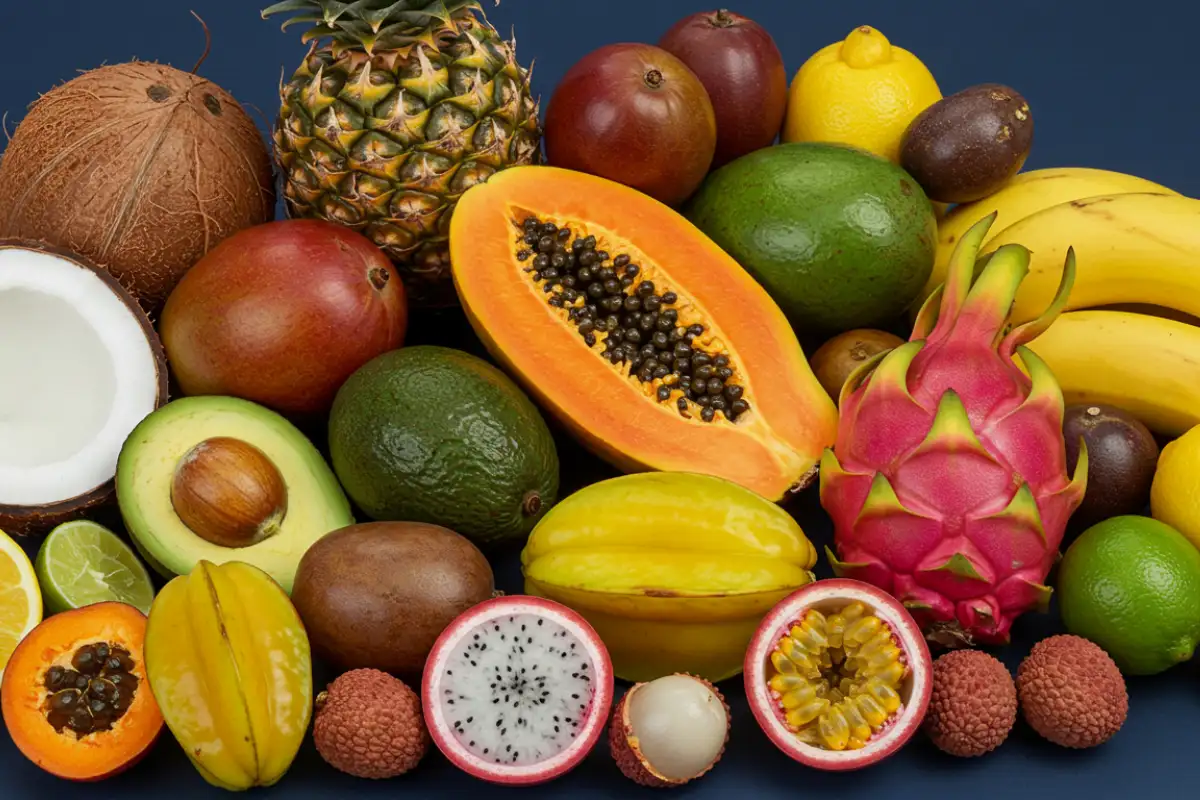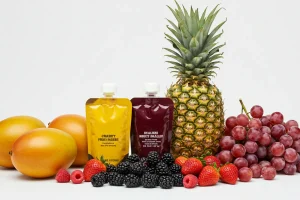The last few years have shown the rising popularity of tropical fruits. These ingredients have been transformed into key elements for food production. Furthermore, fruits of this type find their place in many products. For that reason, you can see them in beverages, yogurts, ice creams, smoothies, jams, desserts, and snacks. Consequently, they represent a key incorporation in the industry. They add color and nutritional value to the final result.
In summary, adding tropical fruits to food production opens a wide variety of possibilities. At the same time, it allows you to stand out from the competition. Finally, these ingredients provide the possibility of offering more natural and healthy alternatives.
Tropical fruits: a value add for your products
Fruits native to the tropics have allowed companies to differentiate themselves. At the same time, they make it possible to offer radically different flavor alternatives. This, of course, captures the attention of other types of consumers: those who look for exotic flavors. For example, the consumption of fruit pulp and tropical fruit purees is constantly growing.
At the end of the day, these facts show that products made with tropical fruits are increasingly attractive to consumers. Incorporating them into your production, therefore, will generate greater loyalty and satisfaction.
The boom of tropical fruits in the food industry
Including fruits native to the tropics in production provides many benefits. They allow:
- Diversify products.
- For instance, generate greater visual and sensory appeal in foods and beverages.
- In fact, increase the value that consumers perceive, particularly in nutritional matters.
- As a result, improve nutritional quality and the healthy profile of the product.
- Finally, offer the possibility of innovating in flavors and combinations.
These fruits are available as tropical fruit pulps or purees. Additionally, they are sold ready to be integrated into industrial processes. As a result, they become a great collaboration.
How to use these fruits in different products
The use of tropical fruit purees in production occurs according to the type of product. Let’s see different examples:
- Beverages and smoothies. By using tropical fruit purees, you can create natural juices, flavored waters, cocktails, and functional beverages.
- Dairy and ice creams. The fruit pulp provides flavor, color, and texture to yogurts, ice creams, and creamy desserts.
- Jams and baked goods. Tropical fruits enrich cakes, cookies, and jams. They provide an exotic and natural touch.
- Snacks and energy bars. These, combined with cereals or nuts, generate innovative and healthy products.
- Sauces and dressings. Some Caribbean fruits, like mango and pineapple, allow you to develop gourmet sauces.
Finally, the key is to choose high-quality fruit pulp. It must be processed under standards that preserve flavor, texture, and nutrients. This ensures consistency in production and improves the final consumer’s experience.
Trends in the demand
The interest in Caribbean fruits is booming. This is due to various factors. For example:
- The preference for foods and beverages with natural ingredients and no artificial additives.
- The search for exotic flavors and different sensory experiences.
- The growth of the healthy and gourmet products market.
- The incorporation of exotic fruits into premium and seasonal lines.
The market is competitive. Therefore, companies that integrate tropical fruits can stand out. This generates innovation and customer loyalty. To achieve this successfully, it is crucial to have suppliers that guarantee freshness, traceability, and quality in each batch of fruit pulp.
Dream Foods: your ally in high-quality tropical fruits
At Dream Foods, we offer a wide variety of Caribbean fruits ready for industrial use. We have certified processes, complete traceability, and a focus on sustainability. Our objective is to support companies in creating innovative and high-quality products.
The advantages of working with us involve having:
- First: certified processes that guarantee safety and consistency.
- Second: complete traceability of each fruit batch.
- Third: specialization in Caribbean fruits, including mango, papaya, pineapple, and passion fruit.
- Also: secure and constant supply for beverage, dairy, dessert, and snack industries.
- Technical support in innovation and product development.
- Finally: products ready to be integrated as pulps or tropical fruit purees.
With us, your company can expand its range of production, offering more attractive and differentiated products in the market. Discover more here: Dream Foods Caribe.
Engine of innovation
So, if your business objective is to increase the value of production, then Caribbean fruits are the perfect ally. We are ready to bring the best of Colombia to your products. We guarantee flavor, freshness, and reliability.
Including tropical fruits in production is a unique opportunity. As a result, it will allow you to make a difference, attract health-conscious consumers, and offer unique flavor experiences. We are a reliable supplier; we guarantee quality and confidence.
References
- FAO. (2024). Mercados y Comercio – Frutas tropicales.
- Food and Agriculture Organization of the United Nations; Ministry of Social Development and Family of Chile. (2021). Promoting safe and adequate fruit and vegetable consumption to improve health.
- Food and Agriculture Organization of the United Nations; Pan American Health Organization. (2021). Effects of fruits and vegetables intakes on direct and indirect health outcomes.
- Food and Agriculture Organization of the United Nations. (2022). Major Tropical Fruits – Preliminary results 2021.
- Gobierno de México. (2024). ¡Descubre las Maravillas de las Frutas Tropicales!
- World Health Organization. (2023, August 9). Increasing fruit and vegetable consumption to reduce the risk of noncommunicable diseases.







